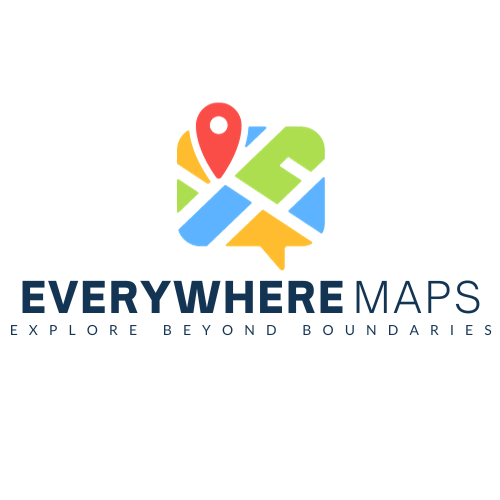Map Your Way to a Fantasy World: The Art of Fictional Maps
Fantasy Worlds on Paper: The Art of Fictional Maps is a fascinating topic that combines imagination, art, and cartography. As fantasy enthusiasts, we have all marveled at the intricate maps that accompany our favorite books, movies, and games. From Middle-earth to Westeros, from Narnia to Hogwarts, these maps help us navigate the fictional worlds we love and immerse ourselves in their lore.
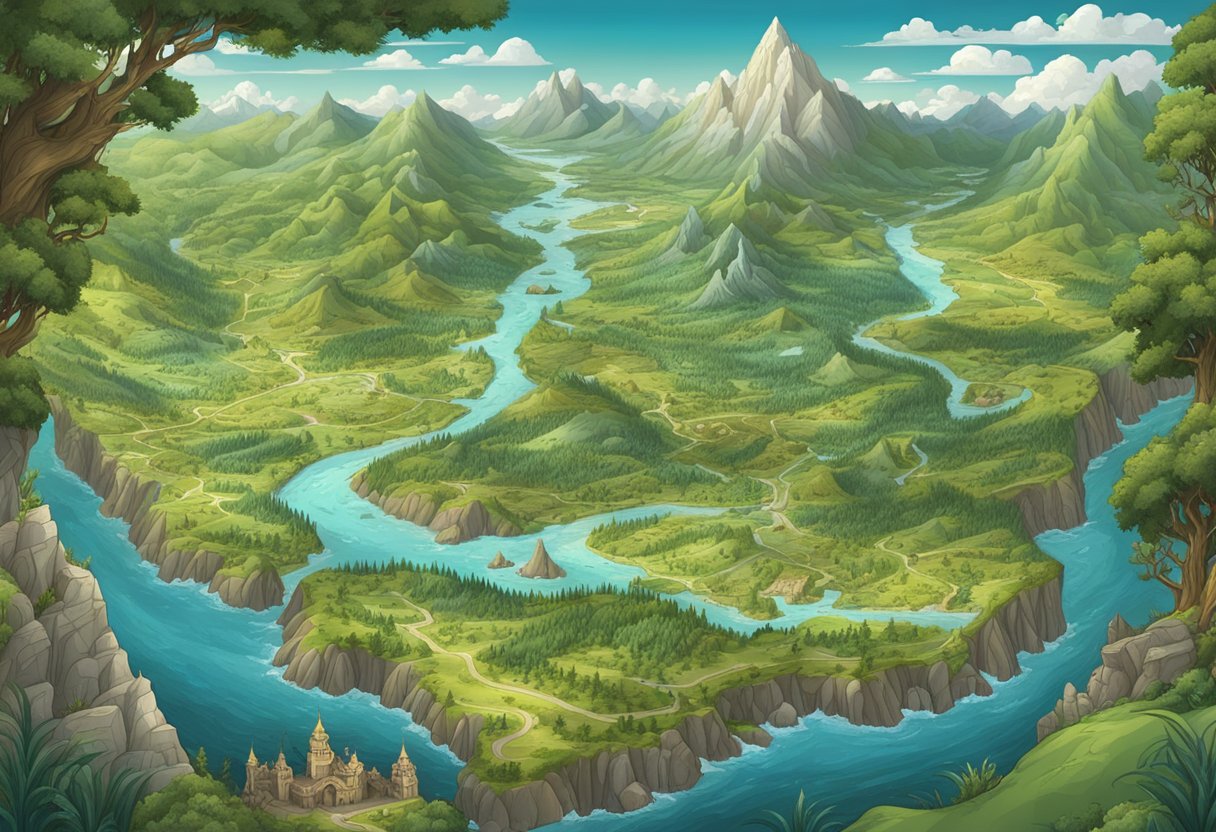
Crafting the Terrain of Dreams is no easy feat, and it requires a unique skill set that blends creativity, research, and technical expertise. Fantasy mapmakers must not only visualize the landscapes, cities, and landmarks of their imaginary worlds but also make them believable, consistent, and engaging. They must pay attention to details such as topography, climate, culture, history, and mythology, and weave them into a coherent and captivating tapestry. They must also use their artistic talent to create aesthetically pleasing and memorable maps that capture the essence of the stories they represent.
Tools of the Trade and Navigational Aids are crucial for fantasy mapmakers, and they vary depending on their preferences, goals, and mediums. Some mapmakers prefer to use traditional tools such as pen and paper, watercolors, and ink, while others rely on digital software such as Photoshop, Illustrator, and 3D modeling. Some mapmakers focus on accuracy and realism, while others prioritize style and symbolism. Some mapmakers create maps for personal enjoyment, while others do it for a living or as a hobby. Regardless of their approach, fantasy mapmakers share a passion for creating worlds that inspire and delight us.
Key Takeaways
- Fantasy mapmaking requires a blend of creativity, research, and technical expertise.
- There are various tools and styles that fantasy mapmakers use to create their maps.
- Fantasy maps help readers immerse themselves in the fictional worlds they love.
Crafting the Terrain of Dreams
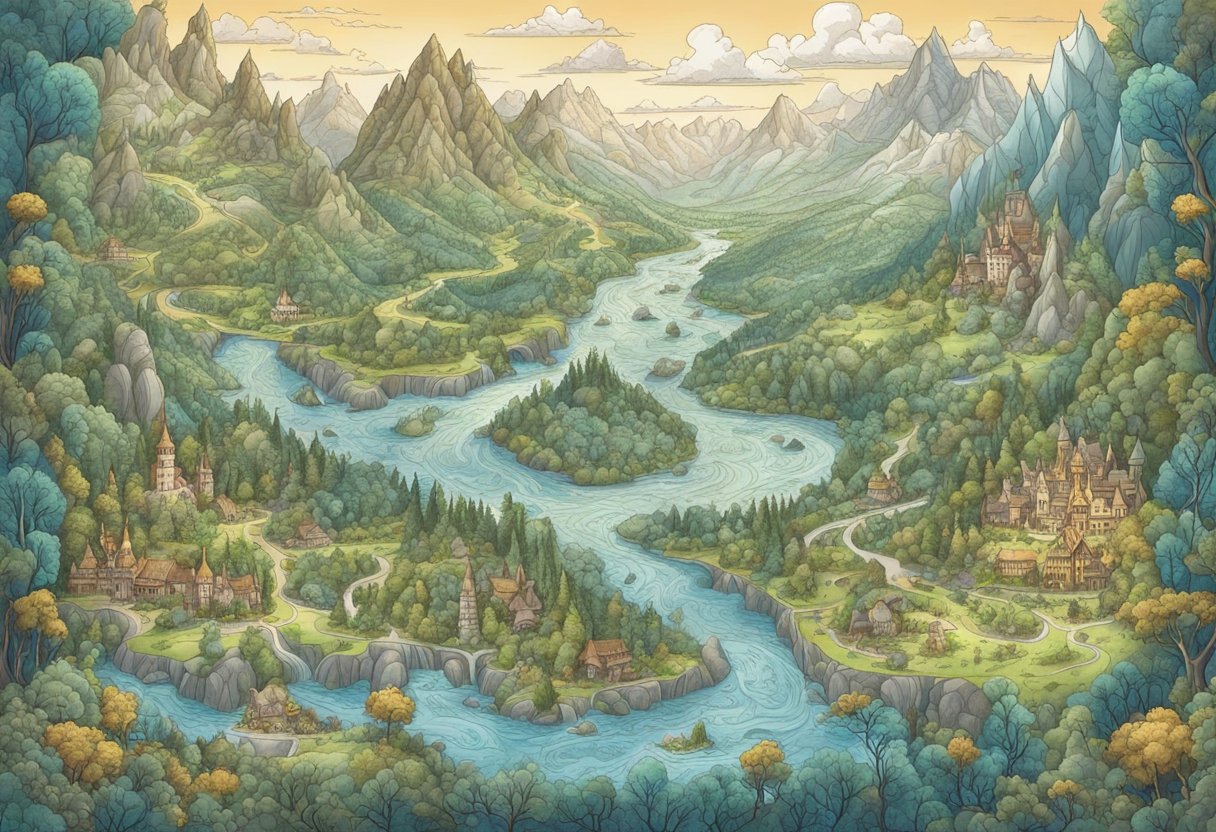
As map-makers, we are the architects of imaginary worlds, the creators of landscapes that exist only in the pages of a book or the minds of readers. Our craft is a delicate one, requiring equal parts imagination, artistry, and technical skill. In this section, we’ll explore the art of crafting the terrain of dreams, from the cartographer’s palette to the borders and coastlines that give shape to our fictional worlds.
The Cartographer’s Palette
When it comes to map-making, color is king. It’s the key to bringing our imaginary worlds to life, to giving them depth and texture and making them feel real. From the lush greenery of the Shire to the fiery pits of Mordor, color is the language we use to speak to our readers, to convey mood and atmosphere and emotion.
But color is more than just a tool for visual storytelling. It’s also a means of organizing information, of making our maps more legible and intuitive. By assigning different colors to different regions or features, we can help readers navigate our worlds more easily, and make sense of the complex relationships between different places and peoples.
From Middle Earth to Hogwarts
Of course, no discussion of map-making would be complete without a nod to the masters of the craft: J.R.R. Tolkien and J.K. Rowling. From the sweeping vistas of Middle Earth to the twisting corridors of Hogwarts, these authors created some of the most iconic and beloved fictional worlds of all time, and their maps are a testament to their genius.
But what makes their maps so special? It’s not just the stunning artwork or the intricate details. It’s the sense of history and mythology that they convey, the feeling that these worlds are alive and vibrant and full of stories waiting to be told. As map-makers, it’s our job to capture that same sense of wonder and awe, to create maps that are not just beautiful, but meaningful.
Borders and Coastlines: More Than Just Lines on Paper
Finally, we come to the borders and coastlines that define our worlds. These may seem like simple lines on a page, but they are so much more than that. They are the boundaries that separate one culture from another, the frontiers that adventurers must cross to discover new lands and new treasures.
But they are also the places where stories happen, where conflicts arise and alliances are forged. The borders and coastlines of our maps are where our worlds come alive, where the characters we create must navigate the challenges and opportunities that lie ahead.
In conclusion, crafting the terrain of dreams is a complex and multifaceted art, one that requires equal parts creativity, technical skill, and storytelling prowess. But with the right tools and techniques, we can create maps that are not just beautiful, but meaningful, maps that capture the imagination and transport readers to worlds beyond their wildest dreams.
Tools of the Trade and Navigational Aids
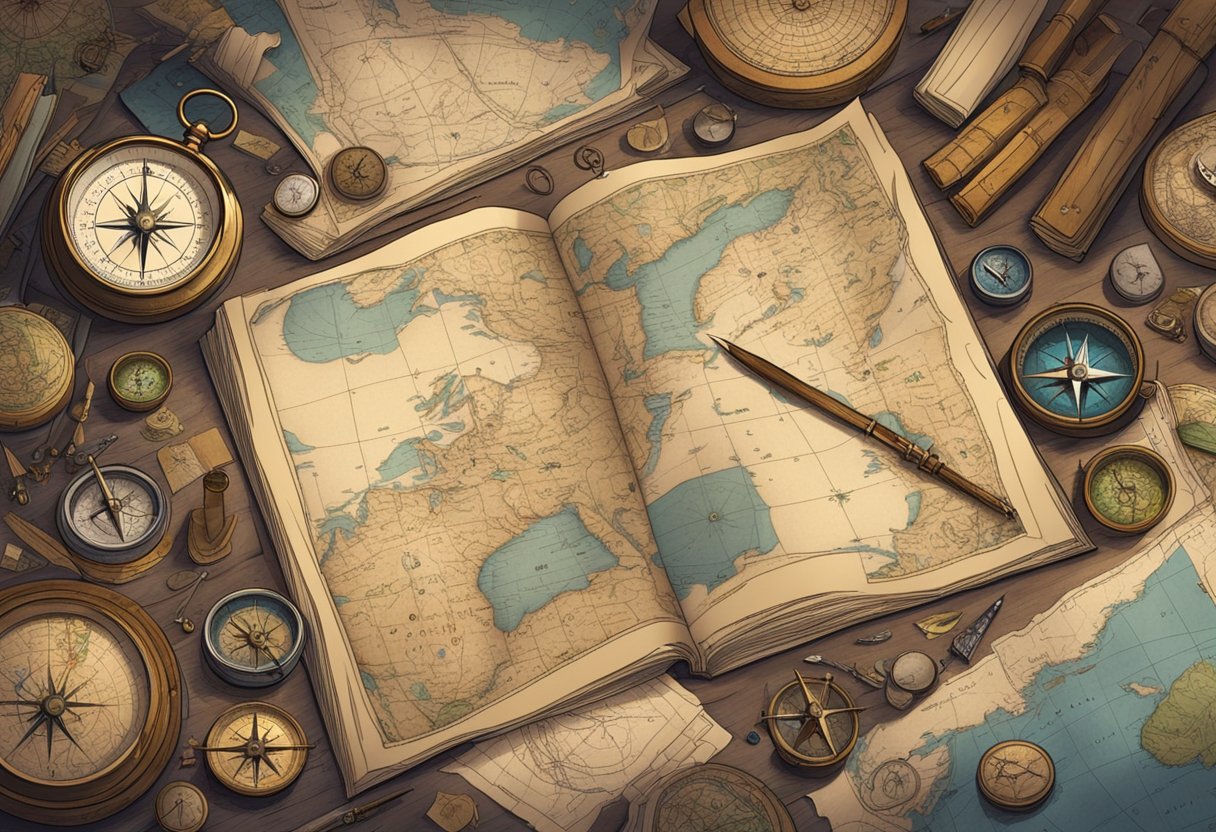
As cartographers of fantasy worlds, we have a few tools of the trade that we rely on to create maps that are both beautiful and functional. Let’s take a look at some of the essential tools and navigational aids that we use to guide our readers through the lands of our imagination.
The Digital Age of Fantasy Maps
Gone are the days of painstakingly drawing maps by hand with ink and parchment. Nowadays, we have a plethora of digital tools at our disposal to help us create stunning fantasy maps. One of our favorites is Azgaar’s Fantasy Map Generator, a free online tool that can generate a random map for us to customize and tweak to our heart’s content.
A Compass Rose by Any Other Name
A compass rose is an essential navigational aid that helps orient readers to the cardinal directions of our map. But who says it has to be a boring old arrow? We like to get creative with our compass roses, using everything from stylized dragons to intricate Celtic knots to add a touch of flair to our maps.
Marking the Mythical: Legends and Scale Markers
No map is complete without a legend to explain the symbols and landmarks we’ve used to denote cities, mountains, forests, and other features of our fantasy world. And of course, we need a scale marker to help readers get a sense of distance and scale. But who says these elements have to be dry and boring? We like to have fun with our legends and scale markers, using typography and design elements that fit the aesthetic of our fantasy world.
So there you have it, our essential tools and navigational aids for creating stunning and functional fantasy maps. Whether we’re erasing, hatching, or using digital generators, we always strive to create maps that transport our readers to the lands of our imagination.
Frequently Asked Questions
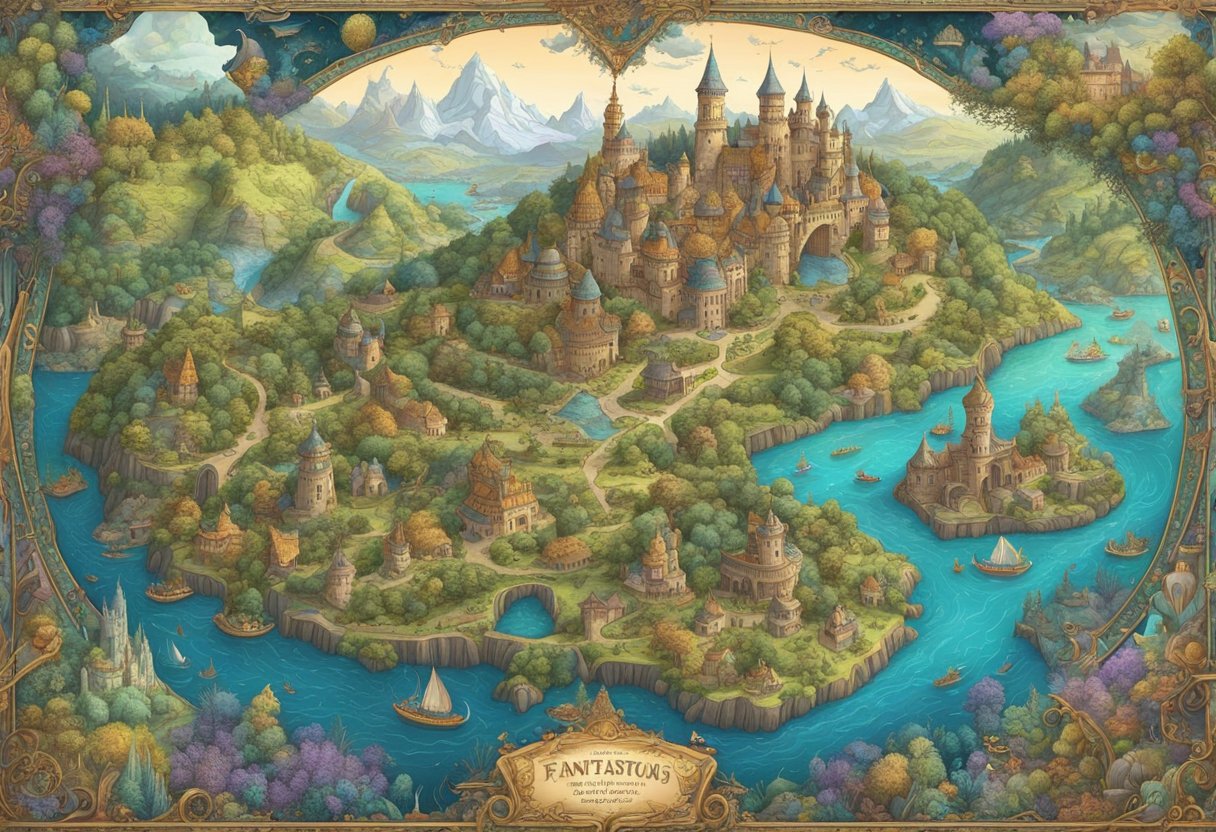
What tools do I need to create a fantasy map that doesn’t look like a spilled bowl of spaghetti?
We’ve all seen those fantasy maps that look like a tangled mess of spaghetti noodles. Fear not, dear adventurer! All you need is a pencil, eraser, ruler, and some paper. If you want to get fancy, you can use a compass, protractor, and colored pencils. But remember, the most important tool you have is your imagination.
Can I really use rice to make a fantasy map, or is that just a recipe for dinner?
Yes, you can use rice to create a textured map. Just spread the rice out on a flat surface, then use your fingers or a tool to create the landforms. You can even dye the rice different colors to represent different terrain types. Just be sure to use uncooked rice, or you’ll end up with a soggy mess.
Are there any free fantasy map generators that won’t summon a demon when I hit ‘create’?
We can’t guarantee that any map generator won’t summon a demon, but there are some free options out there that won’t cost you your soul. Inkarnate and Azgaar’s Fantasy Map Generator are popular choices that offer a range of customization options.
What are the must-have features to include in my fantasy map so adventurers don’t walk off the edge?
First and foremost, you’ll want to include a scale so that adventurers can get a sense of distance. You’ll also want to include a compass rose to show the cardinal directions. Other important features to include are bodies of water, mountain ranges, forests, and settlements.
How can I draw a fantasy map without artistic talent, or should I just stick to stick figures?
Don’t worry if you don’t consider yourself an artist. Anyone can create a fantasy map with a little practice. Start by sketching out the general shape of your landmasses, then add in the details. Remember, your map doesn’t have to be perfect – it just needs to convey the information you want to share.
What’s the secret sauce for crafting a fantasy map outline that doesn’t resemble a weird Rorschach test?
The key to creating a clear and readable map is to keep it simple. Start with the basic outline of your landmasses, then add in the major features. Use different colors and textures to differentiate between terrain types. And don’t forget to label everything clearly – nothing is more frustrating than a map with unmarked locations.
